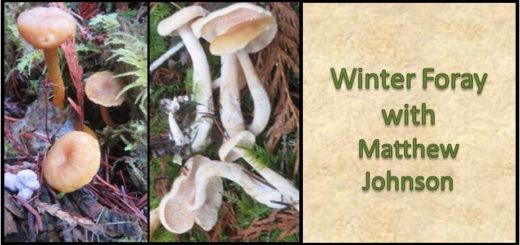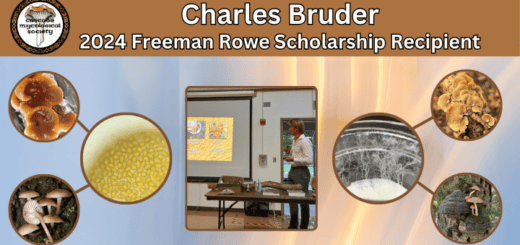Is that a Morel in your pocket, or are you just happy to see me?
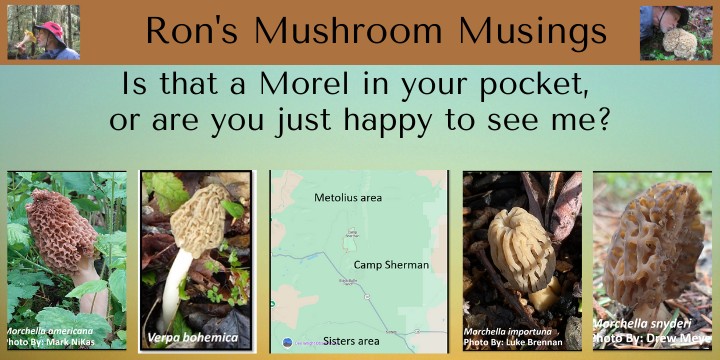
As April rolls around and Oregon’s cold rainy days begin to moderate, mumblings of spring mushrooms start to bubble up. It could be a posting or two on the internet, an email sent from a friend or you’re accidently included in a secret conversation regarding a mushroom find via the messaging app Signal. Regardless of how this information starts circulating, the excitement of scoring a basket filled with spring mushrooms starts to build. Then, just out of curiosity, you open inaturalist.org to look for any recent mushroom observations and voilà, a picture of a Landscaping Black Morel (Morchella importuna) pops up.
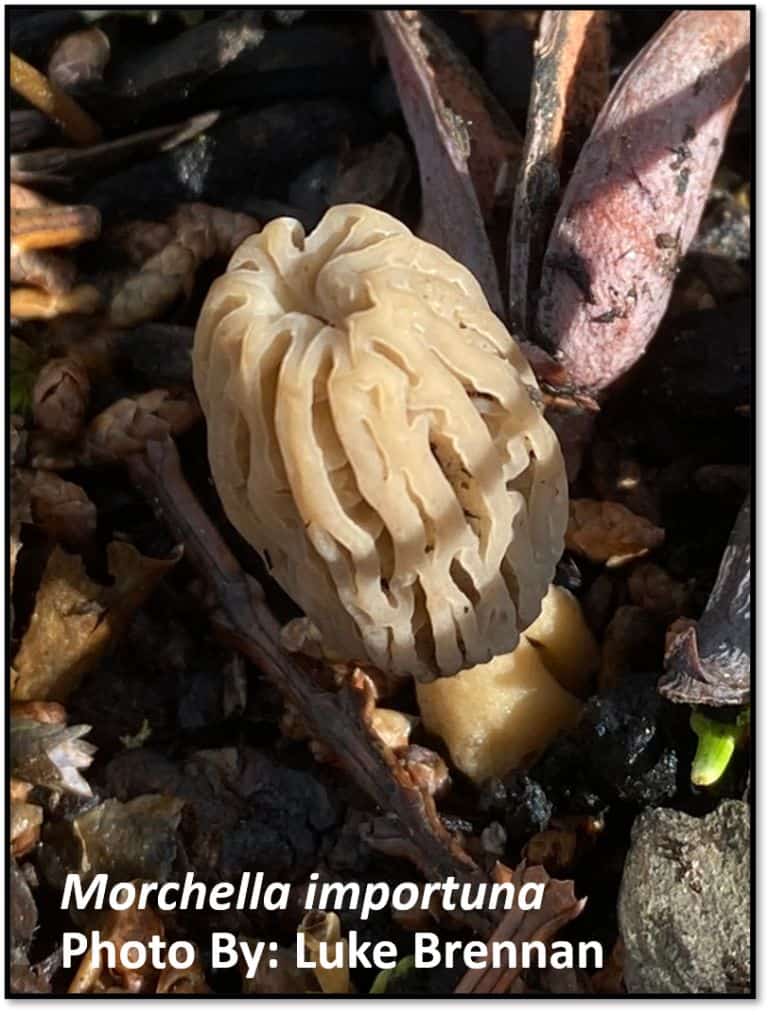
Luke Brennan, who describes himself as a beginner Mycologist and UO student, found this morel on March 17th 2025 off of Orchard Street in Eugene and was kind enough to share the news on iNaturalist. Landscape morels “sort of” mark the official beginning of morel season, which usually always kicks off with Eugenians finding morels in yards, gardens, parks, garden pots, graveyards and just about anywhere morels want to pop up. When it comes to the mysterious morel, trying to be too specific about their fruiting habits and suitable substrates can be an exercise in futility. They do what they want, when they want, and where they want. That said, it is generally accepted that here in our part of the Willamette Valley, there is an observed order regarding when different morel species fruit based on weather conditions, month, location, and elevation. The saprotrophic mushroom M. importuna is generally the opening act, typically starting in March in our urban and suburban areas. It is said to be associated with landscape disturbances that happened the previous year. These would include yard renovations, putting down wood chips, extracted trees, added garden amendments and whatever the heck else inspires them to fruit. It’s unlikely you’ll see one of these from a drive by, riding your bike, jogging or casually glancing around. They can be small, easily blend in with their surroundings and they are completely disinterested in trying to get your attention. Be patient, check multiple areas around town and hopefully you’ll be successful. It’s a good way to get in your 10,000 steps.
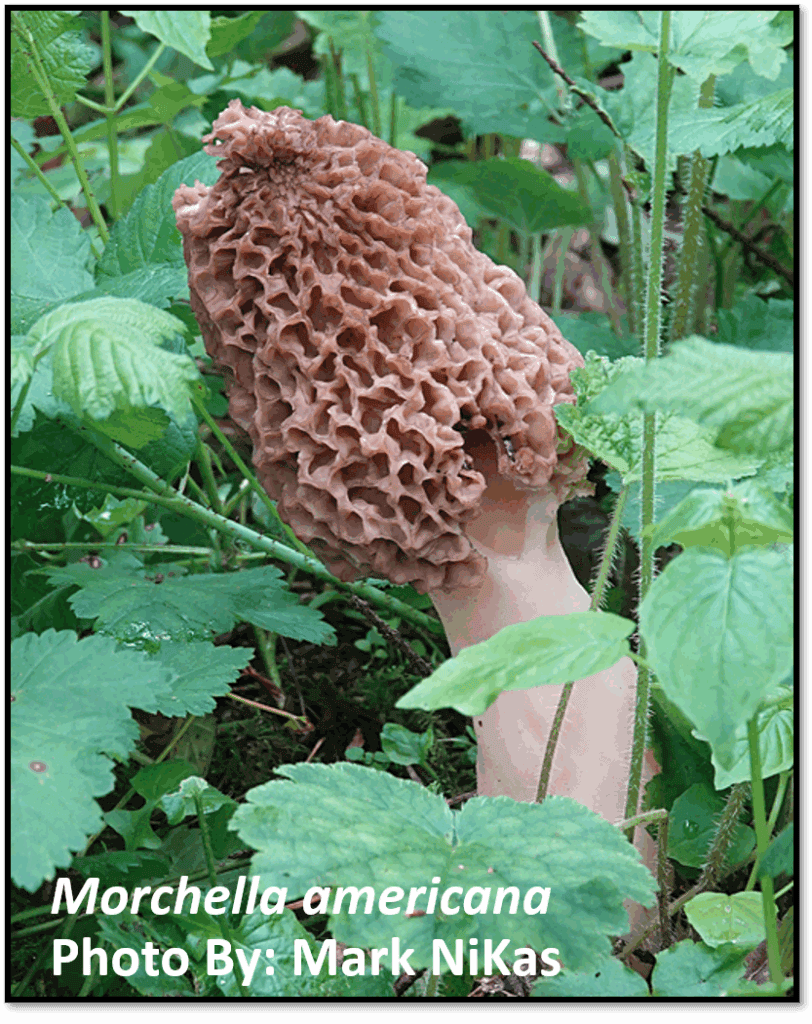
Riparian areas are second on the list of places to hunt morels. One such morel you might find there is the American Yellow Morel (Morchella americana). This morel can be found around waterways lined with cottonwood trees but can also be found fruiting around other hardwood tree species. Whether M. americana is mycorrhizal, saprotrophic or both depends on which website you go to or book you read. Fungi that can be both are described as being facultative mycorrhizal fungi. They can be associated with plants but are not totally dependent on them for nutrients. Kind of like loving a Micky D’s Big Mac but not relying on it for “any” nutrients. The amount of Lane County observations of M. americana species on inaturalist.org is far less than those of M. importuna. Mark Nikas submitted this observation of M. americana to inaturalist.org on April 25th, 2022. It was found near Oakview Ave, in the vicinity of the Fern Ridge Reservoir.
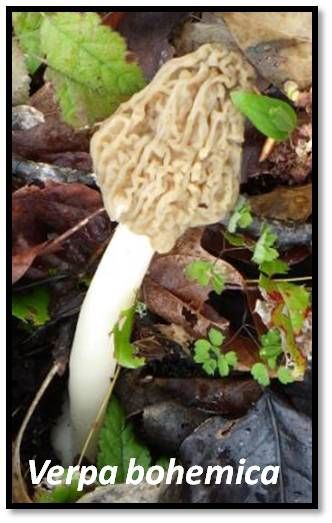
M. americana starts fruiting around the same time as Verpa bohemica, commonly called the Early Morel or Wrinkled Thimble Morel. While not a true morel, both Morchella and Verpa reside in the same family of Morchellaceae. V. bohemica is also considered a riparian species and is found more often around waterways lined with cottonwood trees than its morel cousin. V. bohemica can get quite large and its tall white stem can make it easier to see. V. bohemica’s relationship with cottonwood trees is probably mycorrhizal but could also be saprotrophic. One website suggested it was only mycorrhizal part of the time. Just chalk it up to being another facultative mycorrhizal fungal species. Regardless of its personal relationship with trees, it is considered an edible mushroom and is one of Sandy’s favorites.
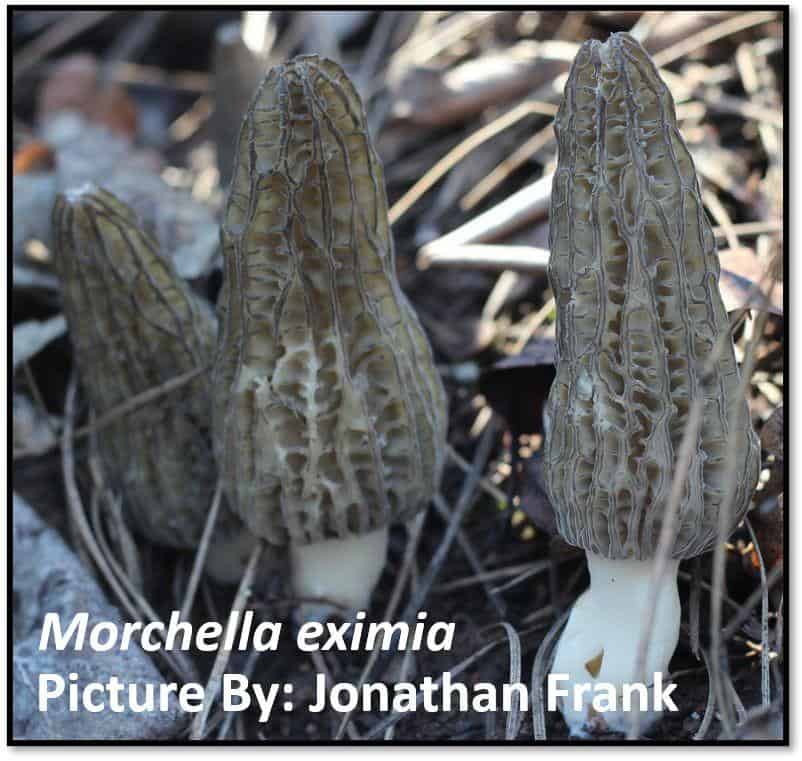
Next on the fruiting time horizon is the Burn Morel or Fire Morel. This was actually a very close call as morels that are commonly referred to as “Naturals” can certainly coincide with the fruiting of burn morels. Scanning through various mushroom books and online observations, burn morels have been found as early as April whereas most natural morel observations on inaturalist.org are dated May through June. So, I’ve simply put the burn morels as the next morel you are most likely to find. This species of morel, Morchella eximia (not a skin condition), is only one of perhaps half a dozen species that can be found in burn sights. While some can be identified based on their physical characteristics, others require the aid of a microscope or DNA analysis to determine who’s who. Burn morels are by far the most hunted, collected, sold, and eaten type of morel in Oregon. Why? Because we have lots of forest fires and by their very nature burn morels love the aftermath of forest fires. What burned last summer becomes an all you can eat buffet for morels that next spring. If you haven’t been writing down the burn sites as our local news stations have been televising them, you can purchase detailed burn site maps online. CMS members Trent and Kristen Blizzard produce very detailed burn maps specifically for morel hunters. If you visit a burn site, just wear old clothing as soot and ash will be plentiful, as will other morel hunters.
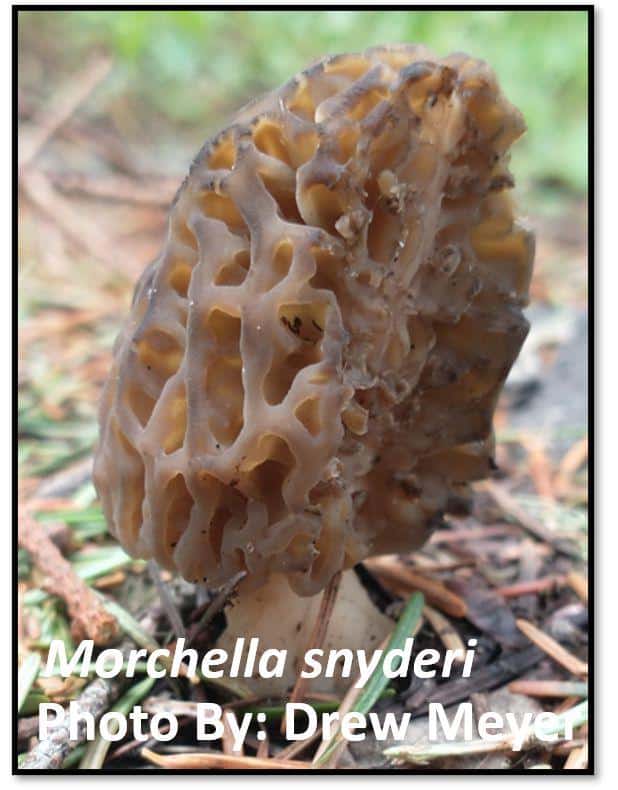
Finally, it’s time for the so called Natural Morels that mostly start fruiting in May. Actually, the name “Natural” is quite appropriate as these species of morels do not need forest fires, yanked out trees, bulldozed yards, piles of wood chips, unnatural disturbances or disruptions in the force to encourage fruiting. Your neighbors won’t tell you to get off their front lawn, no trudging through wetlands and your clothing will not be stained with soot and ash. I think of these morels as being more ecologically sophisticated in their geographical choices. One such natural is Morchella snyderi, sometimes call the Natural Black Morel. However, as you can see from its picture, it isn’t always black. Like so many ambiguities associated with morels, their colloquial names can be as incomprehensible as their relationships with plants. I guess it’s like calling some extremely tall person Shorty or a bald guy Curly (Hey, I’ve been there). M. snyderi is believed to be another facultative mycorrhizal fungus. It can be found hanging out with true Fir trees, Ponderosa pine, Douglas fir as well as other conifers. A second Natural morel you might find is Morchella brunnea, sometimes referred to as the Brown Morel. It can be found around hardwood trees like cottonwood, oak, alder, and ash.
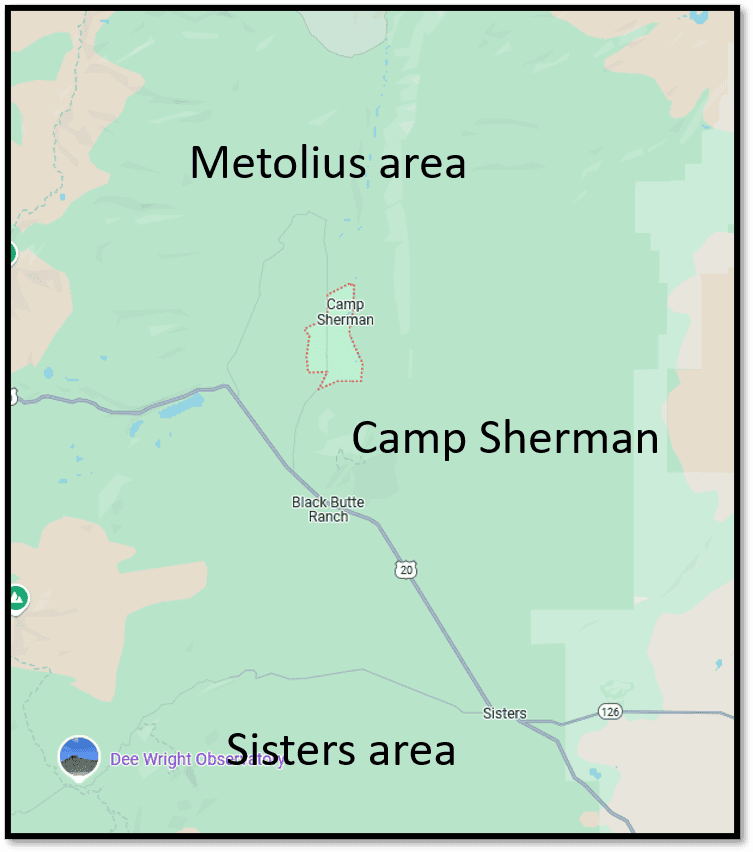
A good place to start looking for M. snyderi and M. brunnea is east of the Cascade Mountain range in and about the Sisters area, Camp Sherman and an area known as the Metolius Preserve. When hunting for morels east of the Cascade Range, start at the lower elevations and keep going up as the temperatures get warmer and the snowline recedes. Natural morels can be found all the way into June if you keep going up in elevation as the conditions there become more favorable for fruiting. Just keep in mind that late spring and especially summer is when the hordes of mosquitoes are also fruiting at higher elevations. Due to Oregon’s short summers at high elevations, anything moving looks like dinner to a mosquito. Sandy and I tried to hunt for morels around the passes a few times but gave up due to weakness as our blood kept being drained by voracious, sadistic mosquitoes that were unsympathetic to our pleadings to stop.
While there may be other species of morels fruiting, both known and yet to be known, don’t worry about which one you find or exactly when in the spring or early summer you find it. Just be certain that it is a morel and not a mushroom in the genus Gyromitra. Mushrooms in Gyromitra are brainy looking mushroom that anyone foraging for morels needs to become very familiar with. Described as poisonous, it is not a good morel substitute and you definitely do not want to give it a try.
Although I did not specifically mention clear-cut (logged) areas as a category, just think of them as being very large “disturbed areas”. The year after a clear-cut, it’s possible to find morels like M. importuna as well as other morel species feasting in all that debris. There is also a good chance that species in the genus Gyromitra will also be participating in the all you can eat buffet. Just be careful as logging companies can apply herbicides as well as other sprays to cleared area prior to replanting. The Oregon Department of Forestry has published a document regarding spraying, titled “Aerial Pesticide Application Monitoring“. Its introduction begins with; “Forest pesticides, which include herbicides, fungicides, insecticides, and rodenticides, are commonly used to aid in the re-establishment, growth, and survival of forest tree species throughout Oregon”. Yikes!!
Just remember that everything I’ve written in this article, while not totally fabricated, was based on personal experiences and the “facts” that could be ascertained from more reputable websites and mushroom books. The species I’ve listed were correctly named at the time of this writing; however, species names can change on a daily basis. The dates that specific morel species fruit and their locations were mostly obtained from observations made by magnanimous citizen scientists that contributed to iNaturalist. As most of us are reluctant to disclose any of our “secret” mushroom hunting areas, we greatly appreciate the observations that more benevolent people upload to the iNaturalist database. Just remember that fruiting times are estimates and are subject to temperature, soil moisture, location, habitat, elevation and your ability to see them.
Always remember to fully cook your morels as raw and undercooked ones will make you sick. Eat only a small amount at first as some people have experienced gastrointestinal distress or have had an allergic reaction to eating morels. An unfortunate case of morel poisoning occurred in April of 2023 at Dave’s Sushi restaurant in Bozeman, Montana. Dave served a dish of raw morels that had been covered over with a heated marinade. As a result, the dish caused over 50 illnesses, 3 hospitalizations and 2 deaths. The restaurant’s owner, Aaron Parker, concluded that the safest way to prepare morels was to boil them for 10 to 30 minutes to neutralize any toxins they contain. Sandy and I have never boiled them but certainly cook them very, very well. Just be careful and as always, stay safe.
Ron

